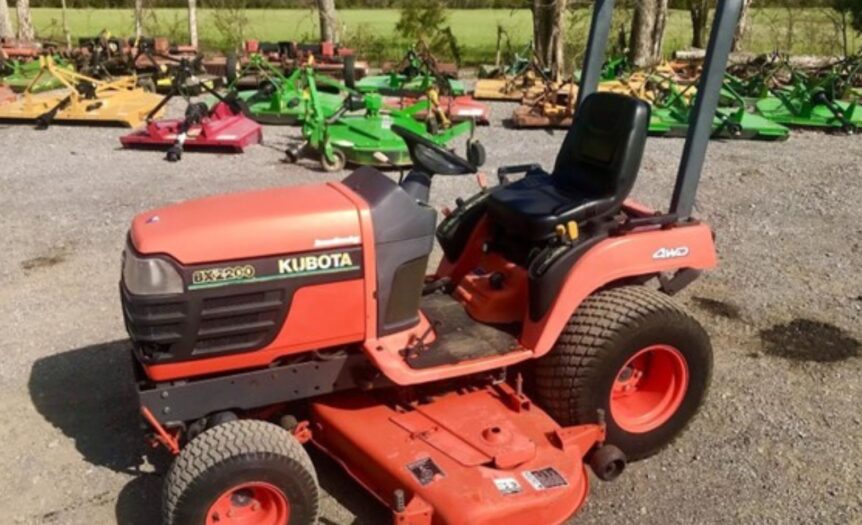In the world of powerful equipment and machinery, certain components play a crucial role in ensuring smooth operations and optimal functionality. One such component, often overlooked yet essential, is responsible for the efficient transfer of power, control, and stability. It is a complex network of hoses that serve as the lifeline of various machines, providing the necessary fluid connectivity and control for tasks ranging from lifting heavy loads to precision movements. Understanding the inner workings of this intricate system is paramount to the proper maintenance, troubleshooting, and successful repair of such machinery.
Spanning across a diverse range of industries, these hydraulic hose assemblies hold immense significance in various applications. From construction and agriculture to manufacturing and transportation, their role is indispensable. These flexible conduits transmit hydraulic fluid to vital components, such as cylinders, motors, and valves, enabling machinery to perform a multitude of tasks with precision and power. While the importance of these hoses cannot be overstated, their complexity and intricacies necessitate a deeper understanding of their composition, connections, and overall functioning.
At the core of every hydraulic hose assembly lies a network of connectors, fittings, and adapters, all meticulously designed to ensure a leak-free connection and efficient flow of hydraulic fluid. These components are manufactured to withstand extreme temperatures, high pressure, and a wide range of environmental conditions as they actively face the challenges posed by heavy-duty applications. Understanding the different types of fittings and connectors, their compatibility and the correct assembly process is vital to optimizing the performance and durability of these essential hoses.
Moreover, a comprehensive understanding of the hydraulic hose routing and how it interfaces with other components of the machinery can prove to be invaluable. This knowledge enables operators and technicians to identify potential issues, diagnose problems, and undertake effective solutions. An understanding of the specific routing requirements and recommendations can prevent excessive hose twisting, abrasion, or unnecessary strain, ultimately extending the lifespan of the hoses and preventing costly repairs. By following proper routing guidelines, operators can ensure the longevity and reliable operation of the entire hydraulic system.
In this comprehensive guide, we delve deep into the inner workings of hydraulic hose assemblies, shedding light on their importance and offering invaluable insights into their composition, assembly, and routing. Whether you are a seasoned professional seeking to enhance your knowledge or an intrepid enthusiast wanting to delve into the world of machinery, this guide is your ultimate companion. Join us as we explore the fascinating world of hydraulic hose assemblies, uncovering their secrets and unraveling complexities along the way.
Kubota BX2200 Hydraulic Hose Diagram
In this section, we will provide a comprehensive breakdown of the elements involved in the hydraulic hose system of the Kubota BX2200. This diagram will help you understand the various components and their connections, enabling you to better comprehend the functionality and maintenance of this important system.
The hydraulic hose system of the Kubota BX2200 consists of several interconnected parts, which work together to ensure the smooth operation of the equipment. These components include fittings, adapters, hoses, and connectors. Each element plays a vital role in transmitting hydraulic fluid efficiently and safely throughout the system.
When examining the hydraulic hose diagram, you will notice various types of fittings and adapters used in the Kubota BX2200. These fittings are responsible for securely connecting hoses and other components, preventing leaks and ensuring a reliable flow of hydraulic fluid. Adapters, on the other hand, serve to join hoses with different thread types or sizes, allowing for compatibility between various parts of the system.
Hoses are the primary channels through which hydraulic fluid flows within the Kubota BX2200. They are designed to withstand high pressures and extreme temperatures, ensuring the smooth transmission of hydraulic power. The hydraulic hose diagram will illustrate the routing of these hoses, demonstrating how they connect to different parts of the equipment.
Connectors are crucial in establishing the necessary connections between various components of the hydraulic hose system. They act as junctions, allowing hydraulic fluid to move from one hose or fitting to another. Connectors are often equipped with seals or O-rings to prevent leaks and maintain system integrity.
By studying the Kubota BX2200 Hydraulic Hose Diagram, you will gain a comprehensive understanding of the layout and components of the hydraulic hose system. This knowledge will prove invaluable when it comes to troubleshooting, maintenance, and repairs. Whether you are a Kubota BX2200 owner or a technician working on this equipment, this diagram will serve as an essential resource in effectively managing the hydraulic hose system.
Understanding the Basics of Hydraulic Systems
In this section, we will delve into the fundamental principles and components of hydraulic systems, exploring their inner workings and how they enable the transfer of power through fluid pressure.

By gaining a comprehensive understanding of hydraulic systems, you will be better equipped to analyze and troubleshoot any issues that may arise, maximizing the efficiency and longevity of your equipment.
Fluid Power and its Advantages
Hydraulic systems are widely used in various industries due to their ability to transmit power through the use of incompressible fluids. Unlike other power transmission methods, such as mechanical or electrical systems, hydraulic systems offer distinct advantages. They can transmit high levels of force efficiently and without the need for large, bulky components, making them ideal for applications that require smooth, precise movements or heavy lifting capabilities.
Key Components and Working Principles
A hydraulic system consists of several key components that work together to generate, control, and transmit hydraulic power. These components include a hydraulic pump, which pressurizes the fluid, a network of hydraulic hoses or pipelines that carry the fluid, and various valves, actuators, and cylinders that control the flow and direction of the fluid to perform specific tasks.
Understanding the working principles of hydraulic systems is crucial for their effective operation. When the hydraulic pump pressurizes the fluid, it creates a force that pushes against the walls of the hoses or pipelines. This force is transmitted to the components connected to the hydraulic system, such as cylinders or actuators, causing them to move and perform the desired tasks.
A crucial aspect of hydraulic systems is their ability to control the flow and direction of the fluid. This is achieved through the use of valves, which regulate the amount of fluid flowing through specific pathways and determine the direction of its flow. By manipulating these valves, operators can control the speed, force, and direction of the hydraulic system, allowing for precise and efficient operation.
|
Component |
Function |
|
Hydraulic Pump |
Pressurizes the fluid to generate hydraulic power |
|
Hydraulic Hoses/Pipelines |
Carry the pressurized fluid to various components of the system |
|
Valves |
Regulate the flow and direction of the fluid |
|
Actuators/Cylinders |
Convert hydraulic power into mechanical work |
By understanding the basics of hydraulic systems, you gain insight into their functionality and can effectively diagnose and resolve any issues that may arise. Proper maintenance and regular inspections will ensure the optimal performance of your hydraulic system, ultimately maximizing its longevity and productivity.
The Importance of Regular Maintenance
Maintaining your equipment is crucial for ensuring its longevity and optimal performance. By regularly inspecting and servicing your machinery, you can prevent potential issues from developing into costly problems. Regular maintenance not only enhances the efficiency and reliability of your equipment but also promotes safety and minimizes unexpected downtime.
One of the key benefits of regular maintenance is the ability to identify and address minor issues before they escalate. By conducting routine checks, such as inspecting hoses and connections for leaks or wear, you can detect any potential problems early on and take necessary corrective measures. This proactive approach can save you significant time and money by preventing larger, more complicated repairs and breakdowns in the future.
Regular maintenance also helps extend the lifespan of your equipment. By adhering to a maintenance schedule that includes tasks such as lubricating moving parts, changing fluids, and cleaning filters, you can keep your machinery in optimal condition and maximize its longevity. This not only saves you money by reducing the need for frequent replacements but also ensures that your equipment continues to perform at its best for years to come.
In addition to cost savings and improved performance, regular maintenance plays a vital role in ensuring the safety of both operators and bystanders. Machinery that is properly maintained is less likely to experience sudden failures or malfunctions that could pose a safety risk. By regularly inspecting critical components, such as brakes, tire pressure, and hydraulic systems, you can identify and address any potential hazards, minimizing the chances of accidents and injuries.
Furthermore, regular maintenance helps minimize unexpected downtime. Equipment breakdowns can result in significant disruptions to your operations, leading to lost productivity and potentially impacting your bottom line. By adhering to a preventive maintenance schedule, you can proactively address any issues before they cause major failures, ensuring that your equipment remains operational and minimizing any unplanned downtime.
In conclusion, regular maintenance is essential for the proper functioning, durability, and safety of your machinery. By investing time and effort into routine inspections, servicing, and repairs, you can ensure that your equipment operates efficiently, lasts longer, and minimizes any potential risks. Make regular maintenance a priority to maximize the value and performance of your equipment.
Step-by-Step Guide to Replacing Hydraulic Hoses
In this section, we will provide you with a detailed step-by-step guide on how to replace hydraulic hoses in an efficient and effective manner. Whether you are a beginner or an experienced user, this guide will walk you through the entire process, ensuring that you have the necessary knowledge and skills to successfully replace hydraulic hoses.
Step 1: Safety Precautions
Before you start replacing hydraulic hoses, it is crucial to prioritize safety. Make sure to wear protective gloves and eyewear to safeguard yourself from potential hazards. Additionally, ensure that the hydraulic system is depressurized before beginning any work to prevent accidents or injuries.
Step 2: Assess the Existing Hoses
Thoroughly examine the current hydraulic hoses to identify any signs of wear, damage, or leakage. Look for bulges, cracks, or frayed areas that indicate possible failure. Take note of the hose sizes and fittings to ensure you have the correct replacement parts.
Step 3: Gather the Necessary Tools
Before you proceed with the replacement, gather all the required tools and equipment. This may include wrenches, sockets, pliers, a measuring tape, and a hose cutter. Having these tools readily available will make the process smoother and more efficient.
Step 4: Remove the Old Hose
Using appropriate tools, carefully disconnect the old hydraulic hose from the system. Make sure to release any residual pressure by loosening the fittings gradually.

Take note of the order of assembly and the routing of the hose to ensure the correct installation of the new one.
Step 5: Measure and Cut the Replacement Hose
Using a measuring tape, determine the required length for the replacement hose. Using a hose cutter, carefully cut the new hose to the appropriate size, ensuring a clean and straight edge.
Step 6: Install the New Hose
Attach the fittings to the newly cut hose ends, making sure they are securely fastened. Follow the previous hose routing and assembly order to properly install the new hydraulic hose. Tighten the fittings using appropriate tools, ensuring a tight and leak-free connection.
Step 7: Test the System
Once the new hose is in place, it is crucial to test the hydraulic system for proper functioning. Slowly pressurize the system, checking for any leaks or abnormalities. Make any necessary adjustments or tightening to ensure optimal performance.
Step 8: Maintain and Inspect
Regularly inspect and maintain the hydraulic hoses to prolong their lifespan and prevent future issues. Check for wear, damage, or leakage and promptly address any concerns. Following a routine maintenance schedule will help keep your hydraulic system running smoothly.
By following these step-by-step instructions, you can confidently replace hydraulic hoses in an efficient and safe manner. Remember to always prioritize safety and take necessary precautions to ensure successful hydraulic hose replacement.








